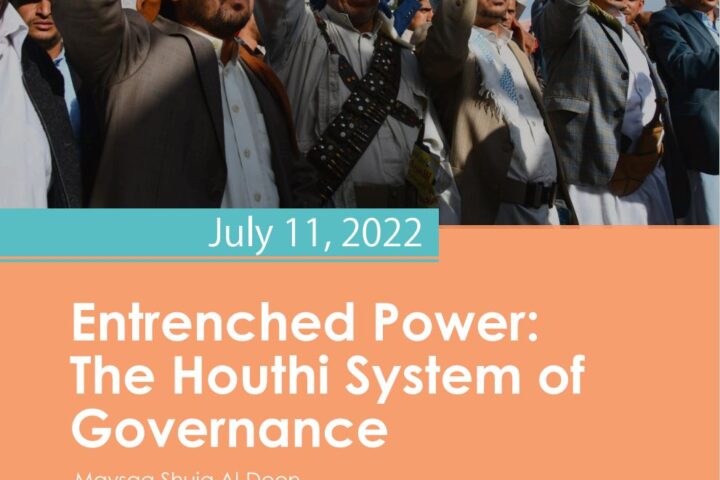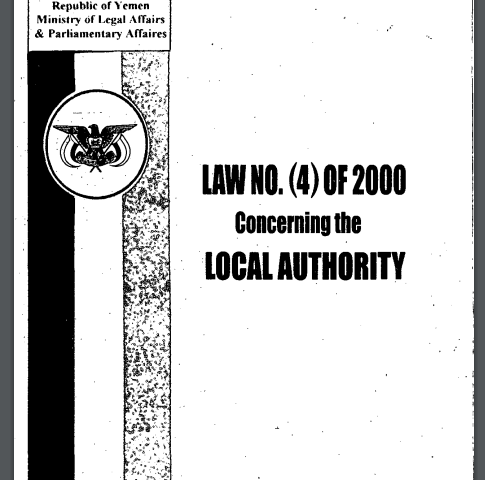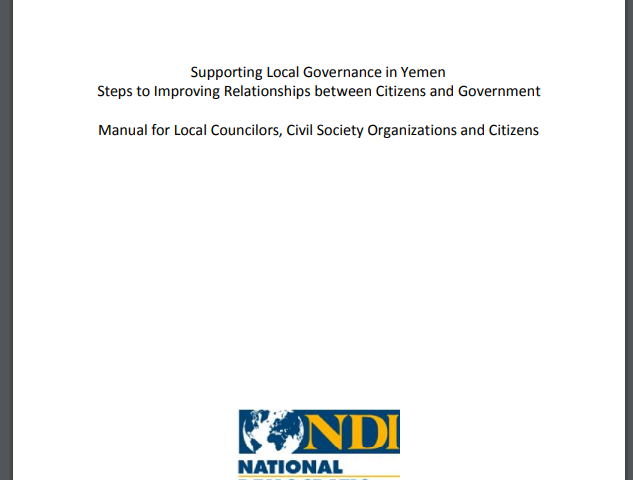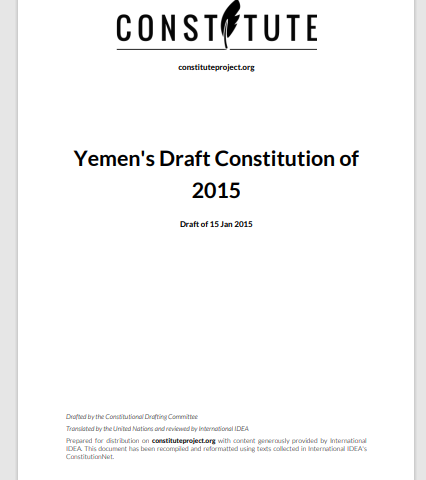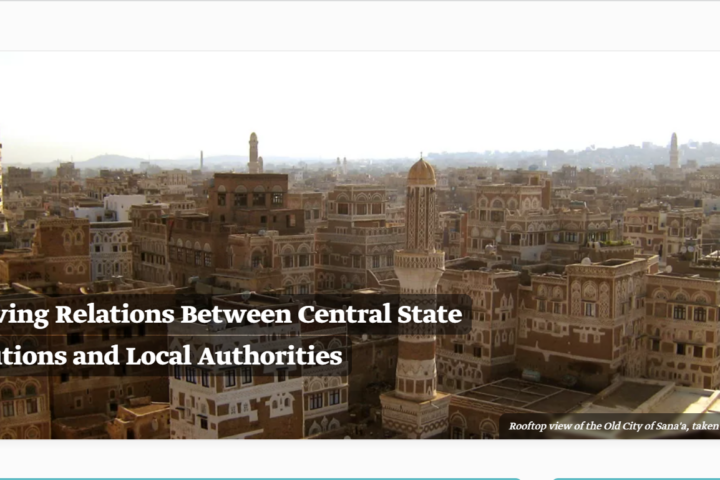The governorate of Ibb is located 193 kilometers south of Sana’a, in the central part of the Republic of Yemen. The governorate is also known as the “green province” for its verdant mountains and agriculture. The governorate is divided into 20 administrative districts. The city of Ibb is the capital of the governorate. Ibb was the center of several ancient and medieval states. Dhafar, the capital city of the Himyarites, and Jiblah, capital of Al-Sulayhi state, are located in the governorate.
Ibb governorate information
Map of Ibb
Economy
Agriculture is the largest employer in the governorate and a cornerstone of its economy. Ibb produces 5.6% of the total agricultural production of the Republic of Yemen, making it the fourth-largest agricultural producer after Al-Hodeidah, Sana’a, and Marib. Cereals and vegetables are the most important crops. The governorate is also home to minerals used in manufacturing cement, basalt quarries and zeolite.1https://www.yemenna.com/index.php?go=guide&op=show&link=ib.
According to the local authority’s 2014 budget, 95% of Ibb’s total revenue came from central subsidies, while local revenues accounted for 5%. The most significant local revenues were local shared revenues, especially zakat, taxes (on goods, services, income, and profit), the sale of goods and services, and fines and penalties.2 Republic of Yemen, Ministry of Finance, Budget Sector: estimated local authority budget for the 2014 fiscal year. Local revenues have decreased due to the war. Military confrontations have occurred in some districts, disrupting trade and agriculture. The establishment of the General Zakat Authority and the transfer of zakat to a central revenue has caused the governorate to lose income.
According to the 2014 Household Budget Survey, the poverty rate in Ibb was 56.6%. With the economic decline and military confrontations of the past years, this rate has likely increased significantly.
Local governance
The local council in Ibb comprises 20 members and the governor. One seat remains vacant because no elections were possible in the district in 2006. Two councilors have passed away and two are abroad for political reasons. This leaves the current membership of the council at 15. The local council is largely dormant, but it holds meetings from time to time as needed. Most of the meetings are joint meetings with the executive offices. By contrast, the administrative board of the council continues to function. The executive offices are working and performing their mandates regularly within the bounds of available resources.3Interview with one of the leaders of the local council, Ibb. March 2019. As in other areas under control of the de-facto authorities, the governorate supervisor is becoming increasingly important in local governance and wields significant power.
Access to basic services
According to OCHA, there are nearly 1.9 million people in need of assistance in Ibb, or about 57% of the population. Sixty-three percent of them are in dire need (status December 2022).4https://data.humdata.org/dataset/yemen-humanitarian-needs-overview, 2023 People in Need in Yemen
Public hospitals and health centers provide health services in the governorate. However, available services are insufficient to meet basic needs. The local authority pays for a small fraction of the cost of healthcare. In addition, hospitals levy small service fees to cover part of the cost. Donors cover the largest portion of the cost of health services. In particular, they cover the cost of fuel needed to operate generators at the hospitals and health centers, and they provide medical equipment and emergency supplies. Donors also cover the costs of medicine as well as vaccination campaigns. There are also a number of private hospitals and health centers providing services to those with the financial means to pay for them.5Interview with one of the leaders of the local council, Ibb. March 2019.
Education has been disrupted in Ibb, where the war damaged 33 schools6OCHA, An Overview of the Humanitarian Needs in Yemen 2018. and teacher salaries are not being paid.7Economic and Social Development In Yemen Newsletter, Issue No. 30, December 2017, published by the Economic Studies and Forecast Sector in the Ministry of Planning and International Cooperation. The local authorities are not providing operational funding for schools. Parents and parents’ councils have sought to collect contributions and raise funds in some of the schools. UNICEF began paying a stipend for teachers in 2019 at a rate of $50 per teacher. This has helped restore education to a minimum level.8Interview with a member of the local council, Ibb. March 2019. Despite this initiative, many students who have the financial means to do so have enrolled in private schools.
As of 2016/2017, 77% of households in Ibb had access to potable water. Ibb is experiencing water scarcity, and the local water corporation is facing major challenges in meeting demand, given the influx of approximately 230,000 IDPs in the governorate (status December 2022).9https://data.humdata.org/dataset/yemen-humanitarian-needs-overview, 2023 People in Need in Yemen To address the problem, donors are helping to drill new water wells. The sewage system in the city is working, but covers only some neighborhoods.10Interview with one of the leaders of the local council, Ibb. March 2019; and: UNICEF, A report on the humanitarian situation in Yemen, October 2018, p. 7.
Demographics
| District | Size (km2) | Population (Female) | Population (Male) | Population (Total) |
|---|---|---|---|---|
| Al Qafr | 676 | 79,876 | 78,099 | 157,974 |
| Yarim | 581 | 125,743 | 125,743 | 249,330 |
| Ar Radmah | 326 | 56,227 | 54,783 | 111,010 |
| An Nadirah | 312 | 56,721 | 53,726 | 110,448 |
| Ash Sha’ir | 145 | 30,411 | 27,847 | 58,257 |
| As Saddah | 270 | 43,267 | 38,292 | 81,559 |
| Al Makhadir | 224 | 81,840 | 79,543 | 161,383 |
| Hubaish | 228 | 84,505 | 67,759 | 152,264 |
| Hazm Al Udayn | 476 | 68,584 | 55,939 | 124,524 |
| Fara’ Al Udayn | 373 | 77,356 | 63,862 | 141,218 |
| Al Udayn | 362 | 109,156 | 95,088 | 204,244 |
| Jiblah | 156 | 87,786 | 80,591 | 168,377 |
| Ba’dan | 240 | 90,352 | 77,123 | 167,475 |
| As Sabrah | 346 | 50,971 | 46,945 | 97,916 |
| As Sayyani | 238 | 84,264 | 79,077 | 163,341 |
| Dhi As Sufal | 181 | 136,487 | 129,077 | 265,564 |
| Mudhaykhirah | 195 | 62,435 | 53,382 | 115,817 |
| Al Mashannah | 74 | 75,654 | 79,028 | 154,681 |
| Al Dhihar | 74 | 123,868 | 129,844 | 253,712 |
| Ibb | 74 | 107,175 | 97,549 | 204,724 |
| TOTAL | 5,552 | 1,632,677 | 1,511,141 | 3,143,818 |
Figures are based on the 2021 Humanitarian Needs Overview Yemen, OCHA. Population figures include the number of IDPs and residents.


